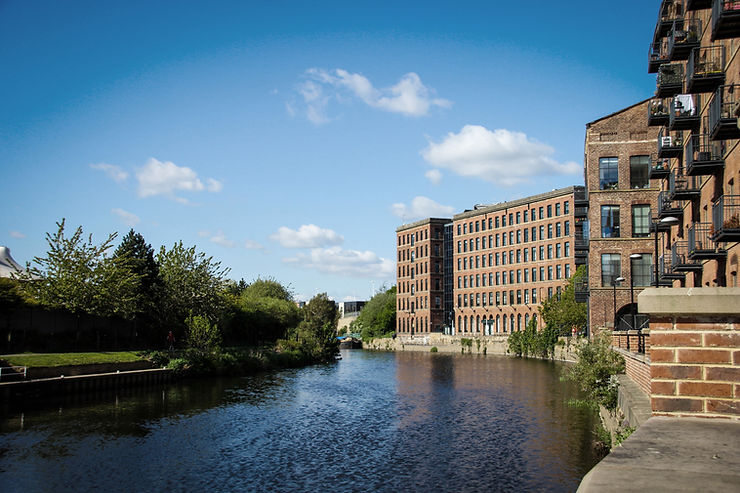Best Practices for Property Management
- Seek Dai Ola Writing Team
- Jun 27, 2024
- 3 min read

Property management is an essential aspect of real estate that ensures properties are well-maintained, tenants are satisfied, and investments are maximized. Whether you're a seasoned property manager or new to the field, adhering to best practices can significantly enhance your efficiency and profitability. This comprehensive guide covers the top strategies for effective property management.
1. Understanding Your Responsibilities
A property manager's duties extend beyond rent collection. They include:
Tenant Screening: Implement a rigorous screening process to select reliable tenants. This involves credit checks, background checks, and verifying employment and rental history.
Maintenance and Repairs: Regular inspections and prompt repairs are crucial. Establish a network of trusted contractors for efficient service.
Financial Management: Keep accurate records of income and expenses, prepare budgets, and ensure timely rent collection.
Legal Compliance: Stay updated with local, state, and federal landlord-tenant laws to avoid legal pitfalls.
2. Effective Communication
Clear and consistent communication with tenants, property owners, and service providers is key. Use these methods:
Digital Platforms: Utilize property management software for streamlined communication.
Regular Updates: Send newsletters or emails to keep tenants informed about property-related news or policy changes.
Open Door Policy: Encourage tenants to voice their concerns or feedback without hesitation.
3. Leveraging Technology
Embrace technology to enhance efficiency and tenant satisfaction:
Property Management Software: Invest in tools like AppFolio, Buildium, or Yardi for managing leases, maintenance requests, and financial reporting.
Smart Home Devices: Install smart locks, thermostats, and security systems to attract tech-savvy tenants.
Online Portals: Offer online rent payment and maintenance request options for tenant convenience.
4. Proactive Maintenance
Preventive maintenance saves money and keeps tenants happy. Follow these steps:
Regular Inspections: Conduct bi-annual inspections to identify potential issues before they escalate.
Seasonal Maintenance: Prepare properties for different seasons, such as servicing HVAC systems before winter and cleaning gutters in spring.
Tenant Education: Inform tenants about basic maintenance tasks they can handle, like changing air filters or unclogging drains.
5. Financial Acumen
Managing property finances effectively ensures profitability:
Budgeting: Create and adhere to a detailed budget covering all property expenses and expected income.
Expense Tracking: Use accounting software to track expenses meticulously and identify cost-saving opportunities.
Rent Pricing: Regularly review and adjust rent prices based on market trends and property value.
6. Legal Knowledge
Understanding and complying with laws is non-negotiable:
Fair Housing Act: Ensure non-discriminatory practices in tenant selection and management.
Lease Agreements: Draft comprehensive and clear lease agreements covering all aspects of tenancy.
Eviction Laws: Familiarize yourself with the eviction process to handle non-compliant tenants legally and efficiently.
7. Tenant Retention
Happy tenants lead to lower turnover rates and higher profitability. Achieve this through:
Prompt Responses: Address maintenance requests and complaints quickly.
Community Building: Organize events or create common spaces to foster a sense of community among tenants.
Incentives: Offer lease renewal incentives, such as minor upgrades or rent discounts, to encourage long-term tenancies.
8. Marketing Strategies
Effective marketing attracts quality tenants. Employ these tactics:
Online Listings: Use popular rental websites and social media to advertise vacancies.
Professional Photos: Invest in high-quality photos and virtual tours to showcase properties attractively.
SEO Optimization: Optimize property listings with relevant keywords to improve visibility on search engines.
9. Risk Management
Mitigate risks associated with property management:
Insurance: Ensure adequate insurance coverage for property damage, liability, and loss of rental income.
Screening: Thoroughly vet tenants to reduce the risk of rent defaults or property damage.
Emergency Plans: Develop and communicate clear emergency response plans for natural disasters, fires, or other emergencies.
10. Continuous Learning
Stay ahead in property management by:
Industry Associations: Join organizations like the National Association of Residential Property Managers (NARPM) for resources and networking.
Professional Development: Attend workshops, webinars, and courses to stay updated with industry trends and best practices.
Feedback: Regularly seek feedback from tenants and property owners to identify areas for improvement.
Conclusion
Mastering property management requires a blend of organization, communication, and adaptability. By implementing these best practices, property managers can enhance operational efficiency, tenant satisfaction, and financial performance. Stay proactive, embrace technology, and commit to continuous learning to excel in this dynamic field.
By following these best practices, property managers can navigate the complexities of their role with confidence and success. For more insights and updates on property management, subscribe to our blog and stay informed!